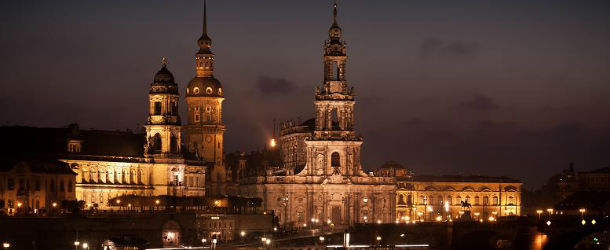Though much is said of the Rhine when it comes to river cruise itineraries, but of course it’s not the only German river in town. The Elbe is one of Europe’s major rivers, extending 680 miles and a cruise along it is typically book-ended by visits to both Prague and Berlin. However, among the other towns and cities you can’t afford to miss along the Elbe is the capital of Saxony, Dresden. Here’s a look at why you should tour Dresden on a river cruise and some of the things you can see.
Despite offering a winning waterfront and being one of Europe’s most beautiful cities, Dresden will forever be associated with the massive damage it suffered during the extensive air raids of the Second World War. Since then however, thanks to one of the world’s largest architectural and landscaping projects, it’s been restored to a world-beating standard and offers visitors a wealth of cultural attractions.
Frauenkirche
This amazing piece of Protestant architecture started off life Roman Catholic before the Reformation and features one of the largest domes to be found in Europe. The church was left in ruins following the Second World War and remained so until the reunification of Germany, after which work began to restore it. This work was completed in 2005 and now, the cathedral stands tall as one of the city’s most iconic landmarks.
The Green Vault
When it comes to collectables, there’s more to Dresden than China. The famous Green Vault is where you’ll find the continent’s largest collection of treasures and is so named because of the green malachite columns which support its principal rooms. It’s part of the larger Dresden Castle complex and contains an awe-inspiring collection of gilded silver, gold, amber, gems as well as carved statues and valuable paintings.
Zwinger Palace
This former Rococo-style structure was once a festival arena back in the 18th century days of the Dresden Court but today, the oldest Zwinger in town is now a complex of museums surrounded by an outer wall which was part of Dresden Fortress. Inside the complex, you’ll find Gemaldegalerie Alte Meister, which houses a number of iconic works by such artistic titans as Titian and Rubens, the the Dresden Porcelain Museum and the intriguing Royal Cabinet of Mathematical and Physical Instruments.
Military History Museum
A completely different museum in every sense, the Militaerhistorisches Museum, to give it its correct name, is split into two distinctly different parts. Believe me when I say, they couldn’t be more distinct. The 1877-built part couldn’t look more like a museum with its stately pillars, but buried in the side of it is a huge futuristic wedge, which forms the other part. Completed in 2011, it’s the perfect embodiment of the way old and new blends in Dresden and offers a refreshing, unbiased look at the history of war.
Semper Opera House
 Another of Dresden’s architectural gems that was rebuilt following the Second World War, the Semper Opera House is a Renaissance-style thing of beauty and offers a host of ballet, jazz and of course, opera performances. It’s impressive enough from the outside but the interior really is something to behold; realised by architects revered during the time of its construction. Think red velvet seats, gold-lined ceilings and majestic balconies.
Another of Dresden’s architectural gems that was rebuilt following the Second World War, the Semper Opera House is a Renaissance-style thing of beauty and offers a host of ballet, jazz and of course, opera performances. It’s impressive enough from the outside but the interior really is something to behold; realised by architects revered during the time of its construction. Think red velvet seats, gold-lined ceilings and majestic balconies.




